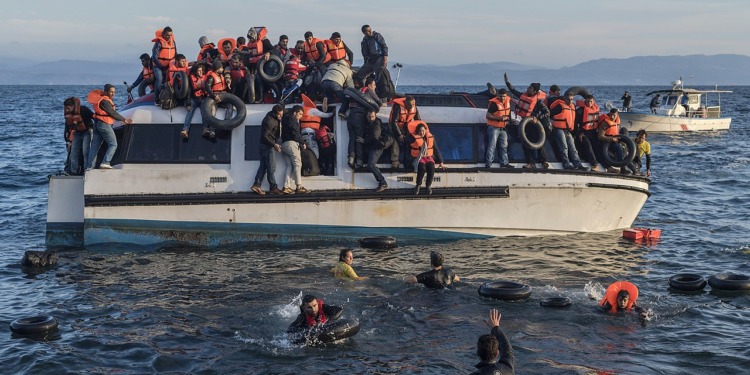Following years of intense negotiations among EU home affairs ministers, the asylum procedure regulation (APR) alongside the asylum and migration management regulation (AMMR), have finally reached widespread consensus.
With only Hungary and Poland opposing the final draft, and Bulgaria, the Czech Republic, Malta, Lithuania and Slovakia abstaining from the vote, 20 countries endorsed the deal.
The significance of this milestone cannot be overstated.
Sweden, holding the rotating presidency of the European Union (EU) Council, played a crucial role in urging member states to continue discussions, as the creation of “an effective migration and asylum system” was one of their priorities. At the end of the meeting, Maria Malmer Stenergard, Sweden’s minister of migration, expressed her satisfaction :
“No member state can deal with the challenges of migration alone. Frontline countries need our solidarity. And all member states must be able to rely on the responsible adherence to the agreed rule. I am very glad that on this basis we agreed on our negotiating position.”
— Maria Malmer Stenergard, Swedish minister for migration
Ylva Johansson, the European Commissioner for Home Affairs, also recognised the importance of such a step for future European Migration policies.
A hugely significant step for #MigrationEU in JHA @EUCouncil today.
Looking forward to starting trilogues with the @Europarl_EN
We are so much stronger when we work together
— Ylva Johansson (@YlvaJohansson) June 8, 2023
Through this deal the EU aims at establishing common measures and procedures to be followed by member states. With over 962,000 asylum applications received by the EU last year, the highest figure since 2016, the need for comprehensive and coordinated action has become increasingly evident.
The overall agreement stems from the New Pact on Migration and Asylum, a comprehensive proposal presented by the European Commission in September 2020. The European Council has now agreed on a negotiating position for both the asylum procedure regulation (APR) and the asylum and migration management regulation(AMMR), paving the way for negotiations with the European Parliament.
The AMMR is proposed as a replacement of the current Dublin regulation, with as one of its key elements a system of “mandatory solidarity,” offering member states three options to address migratory pressure:
(1) accepting relocated asylum-seekers,
(2) financing the return of rejected applicants to their country of origin, or
(3) providing operational support.
The legislation also establishes a provisional one-off payment of €20,000 for each rejected applicant, which will be channeled into a common EU fund.
This provision seeks to “strike a balance between responsibility and solidarity among EU nations”.
The APR, on the other hand, includes provisions on border procedures to examine requests from those who illegally cross borders.
The number of asylum seekers to be relocated annually is set at 30,000.
According to UNHCR data, the total number of people arriving irregularly to the EU by sea in only the first five months of this year totals up to 65,800.
Related Articles: A “New” Pact on Migration and Asylum? | Will Italy Stop Saving Migrants and Punishing Rescuers? | Migrants in the Mediterranean Are Deadliest in Six Years | The Inadequacy of EU Migration Policy Can No Longer Be Ignored
With Italy receiving almost 75% of this number, accounting to around 51,200 people, the country has declared a national state of emergency on immigration since April 2023.
Italy has in fact played a key role in these negotiations as one of the EU countries most affected by migration influxes. With right-wing Prime Minister Giorgia Meloni and her willingness to “tighten the system for asylum seekers,” Italy’s support was crucial for the deal’s success.
Among EU ministers it seems widely agreed upon that the deal without Italy’s involvement would have been futile, a collaboration aligning with Italy’s interests was imperative for the deal’s effectiveness.
One of the primary requirements for Italy was to broaden the number of countries considered “safe” for denied applicants. However, Germany had opposed this proposition for a while. Ultimately, a compromise allowed EU member states more flexibility in returning migrants to “safe” countries.
Im Ernstfall stehen wir einander bei. Das zeigen Deutschland und Italien mit der Unterstützung der #Ukraine und mit der engen Zusammenarbeit in der #EU und der @NATO. Vom Gipfel in Vilnius im Juli wollen wir ein starkes Signal der Ge- und Entschlossenheit senden. #Rom pic.twitter.com/f5WGepIhxr
— Bundeskanzler Olaf Scholz (@Bundeskanzler) June 8, 2023
Even if not yet available the legal document will specify that a “connection” must exist between the rejected asylum seeker and the designated “safe third country.” Notably, individual countries will have the autonomy to determine whether a foreign country fulfills the required criteria.
This historic migration deal sets the stage for challenging negotiations with the European Parliament and the European Commission, the EU’s executive body. The agreement not only addresses immediate concerns but also provides a framework for long-term solutions to manage migration effectively within the EU.
The EU’s commitment to finding common ground sets a precedent for international collaboration in addressing migration issues globally.
The implications of this major deal are far-reaching, ensuring fair treatment for asylum seekers, providing support for frontline countries, and promoting a unified approach to migration management within the EU.
As negotiations progress, it is vital to maintain a cooperative and collaborative spirit to address the complex challenges posed by migration effectively. This is problem that needs to be solve: What is at stake is the continued upholding of European values, and those include the need to protect human life and dignity of refugees.
Editor’s Note: The opinions expressed here by the authors are their own, not those of Impakter.com — In the Featured Photo:Syrians and Iraq refugees arrive at Skala Sykamias Lesvos Greece. Featured Photo Credit: WikimediaCommons.











